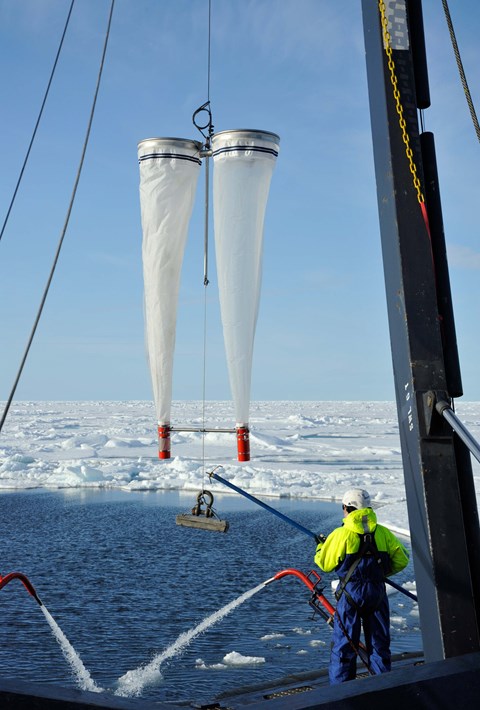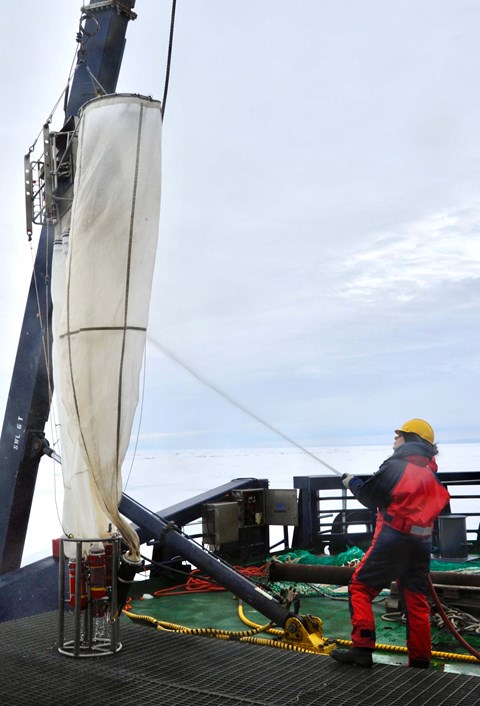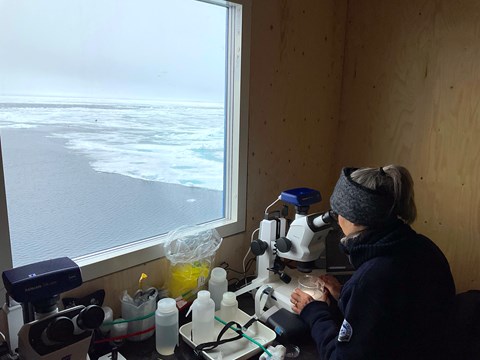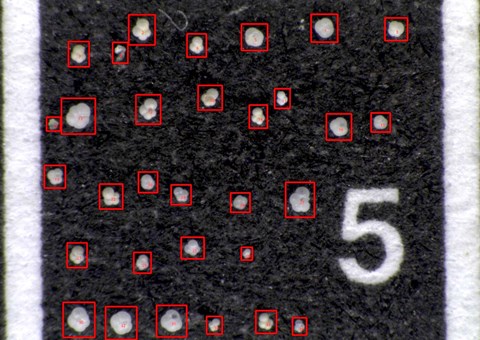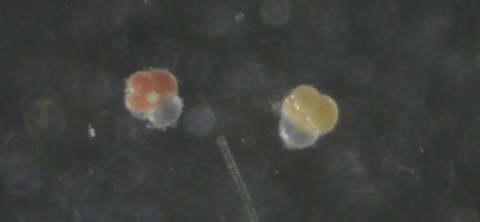Microorganism shell acts as a time capsule
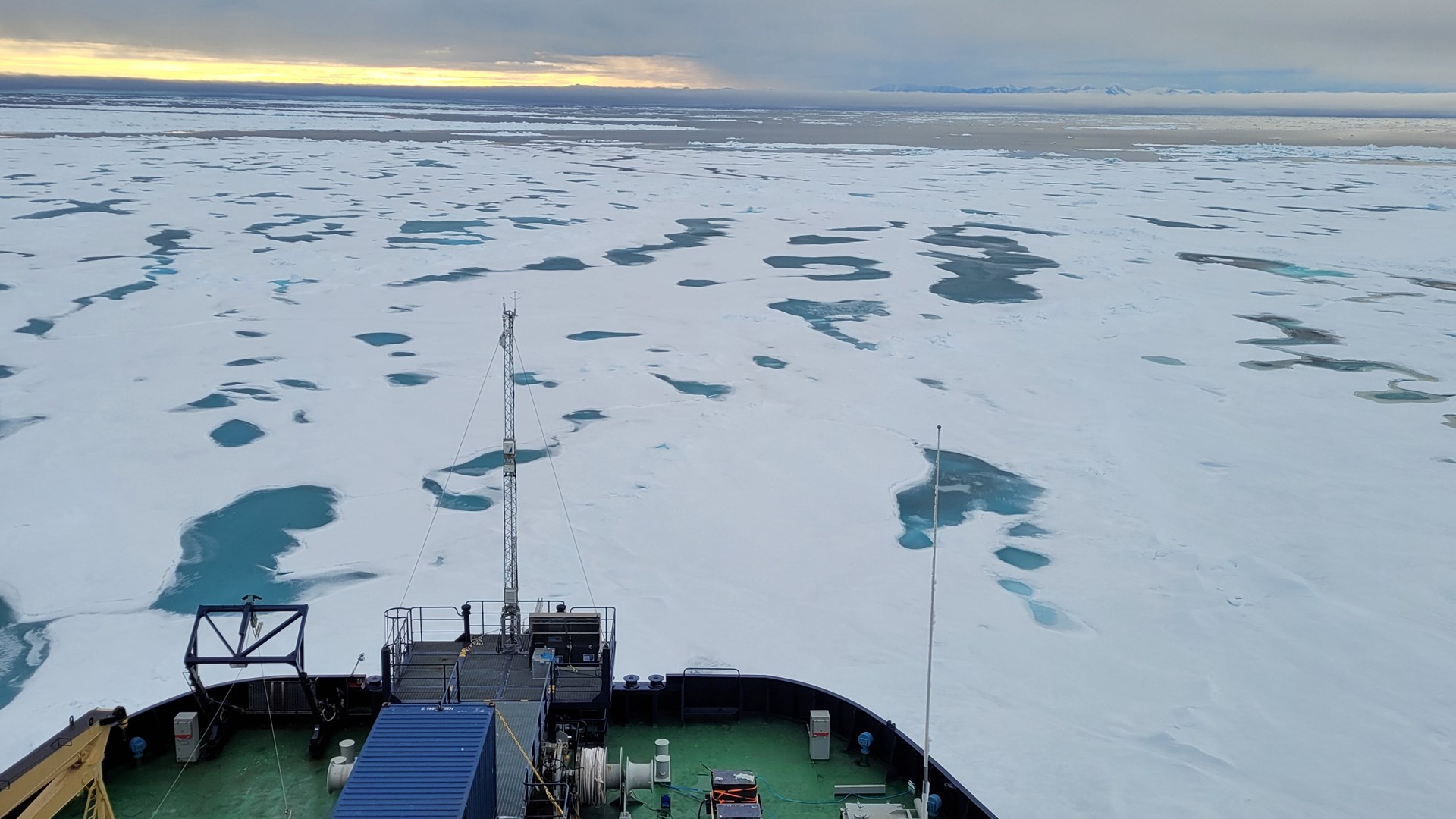 The icebreaker Oden in the Arctic Ocean, near northeast Greenland. Photo: Flor Vermassen.
The icebreaker Oden in the Arctic Ocean, near northeast Greenland. Photo: Flor Vermassen.
At the bottom of the Arctic Ocean, empty shells from dead foraminifera, microscopic single-celled organisms, accumulate. The calcium carbonate shells can be compared to time capsules because the million-year-old fossils can provide valuable information about climate change. During the Synoptic Arctic Survey 2021 expedition with the icebreaker Oden, one of the projects was about documenting these organisms.
– Planktonic foraminifera are extremely valuable for investigating climate change because once dead, their empty shells, which pile up on the seafloor as fossils for thousands and millions of years, act as time capsules of past environmental and climatic conditions, such as ocean temperature, sea ice, ocean pH and atmospheric carbon dioxide. Researchers have many different methods for accessing this information, including chemical analysis, counting species and making measurements of shell size and thickness. Most other planktons do not have a hard shell and leave no trace, thus the foraminifera records are quite unique, says Helen Coxall, associate professor of Marine micropaleontology at Stockholm University.
Natural versus abnormal patterns
According to Helen Coxall, there is an urgent need to understand what will happen to Arctic sea ice, ocean temperatures and Greenland glaciers in our warming future. For this, we need to know what the natural patterns and drivers of variability are. Only with this information can scientists explain what’s “normal” for climate, what is abnormal (outside the normal pattern), and how fast changes might be expected to occur. The geological records preserved in deep marine sediments help researchers to answer these questions.
A species for polar conditions
The researchers took samples of living foraminifera free-floating in the water as well as the shells of dead ones that fall to the seafloor. One goal was to analyze the DNA of the living foraminifera. All the specimens successfully sequenced so far are the polar species Neogloboquadrina pachyderma (N. pachyderma). The researchers can conclude that, even in regions with (usually) thick year-round sea ice, the foraminifera in the central Arctic Ocean are the same genotype as those that live ice-free during the summer months further south in the Nordic seas and Baffin Bay.
– To our knowledge, this expedition was the first to sample live planktonic foraminifera from the water column adjacent to the North Pole and across the Lomonosov ridge in the Central Arctic Ocean. Our initial analyses show that the planktonic foraminifera consist of N. pachyderma, which appear to be thriving. N. pachyderma is the only species of planktonic foraminifera that can tolerate the extreme polar conditions of the central Arctic Ocean, although this could change with subpolar species invading as the Arctic continues to warm, says Helen Coxall.
The researchers found that the species mostly lives at relatively shallow depths under the ice cover, in the top 50 meters. By comparing the abundance of foraminifera with environmental data, such as water temperature, salinity and nutrients, from other research projects from the expedition, it will be possible to find out more about N. pachyderma’s biology and ecology. For example, what it eats, at what depth it spends most of its life, and where and how it reproduces.
Two different colours
Using the skills of computational paleobiologist Allison Hsiang, the researchers use automated image analysis to investigate the morphological characteristics of the foraminifera. One goal is to measure the shell size, as this indicates foraminifera maturity. When matched with depth distributions, this helps the researchers understand how the microorganisms moved vertically through the water during their lifetime.
– Our initial data show that small individuals are concentrated in the upper 100 meters, while larger individuals with thicker shells are more common at deep levels, 200-500 meters. This means that N. pachyderma in the Central Arctic Ocean descends to deeper levels as it matures. We were surprised to find that N. pachyderma occurred in two different colours, yellow and red (see the picture), but even these have the same genotype. We think that the different coloured cytoplasm relates to what the foraminifera was eating or if they were close to reproducing. On-going work will try to establish the different diets and how this maps out with the maturity, how deep the foraminifera was living and if this tells us something about Central Arctic pelagic food webs, says Helen Coxall.
Promising fossil samples
As for fossils of N. pachyderma examined in sediment cores from the expedition, it looks like these have excellent potential for reconstructing climate changes in the central Arctic Ocean thousands of years ago.
– Past climate records from foraminifera can reveal the regular pattern of glacial-interglacial climate swings over the past few millions of years, extreme greenhouse climates tens of millions of years ago and how rapidly transitions between climates states can occur, says Helen Coxall.
About the research project
Name: FORAM
Expedition: Synoptic Arctic Survey 2021 with IB Oden
Researchers:
- Dr. Helen Coxall, PI, Stockholm University (shore-based)
- Dr. Flor Vermassen post-doctoral researcher, Stockholm University (shipboard participant)
- Dr. Clare Bird, Lecturer, University of Stirling (shipboard participant)
- Dr. Allison Hsiang, VR Research Fellow, Stockholm University (shore-based)
- Tirza Weitkamp, PhD student, Stockholm University (shore-based)
Financiers:
- Swedish Research Council (VR)
- Bolin Centre for Climate Research, Stockholm University
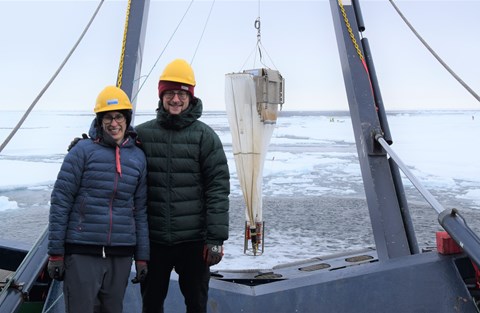
I will never forget what we saw when we arrived North of Greenland. This area is supposed to be covered with thick sea-ice and is known as ‘the last ice area’”. But instead of finding the thick sea-ice, we could see only open water stretching all the way to the Greenland coast. This was climate change looking us right in the eye and reminding us why our type of research is important. – Flor Vermassen
